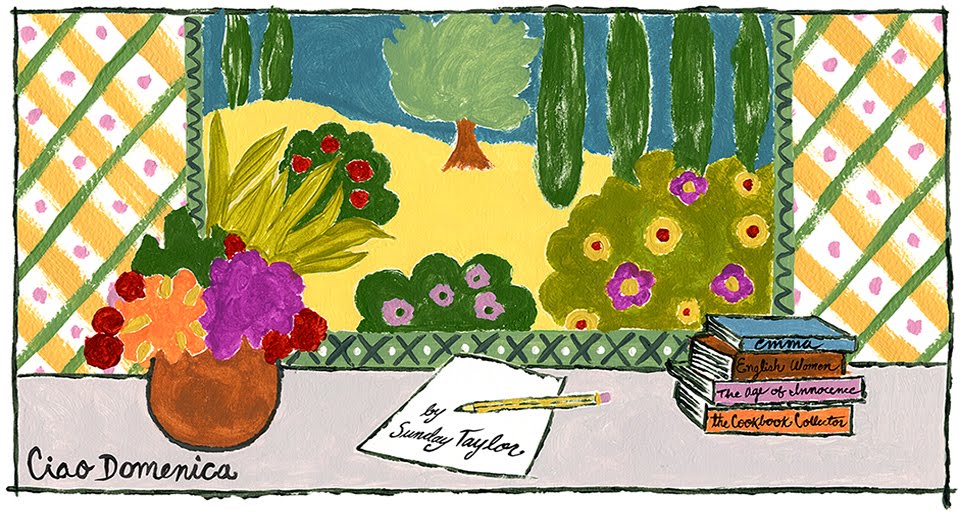Monks House
Sussex, England -- October, 2013
With fall right around the corner (and it can't get here soon enough for me!), I have put together a fall reading list. When the weather cools down, I am always in the mood to curl up with a good book and there are so many I want to read. Some lovely books have been accumulating on my "to-be-read" shelf. I love looking at them and wonder if you, like me, have noticed how beautiful books are becoming. It could be that publishers are trying to win over the e-book crowd or perhaps the designers of book covers are feeling especially inspired right now. Whatever the reason, we seem to be experiencing a renaissance of beautiful books. The art work on the dust jackets is simply stunning. Here is my fall reading list. It includes new releases and classics. These books promise enlightenment as well as beauty!
Juliet Nicolson, whose grandmother was Vita Sackville-West, has written A House Full of Daughters. It is a biography of her family which covers seven generations of women. Despite the fact that there have been many books about her ancestors, she decided to write her own. She wanted to give it her own spin, look beyond the myths and dig deeper for the hidden truths. It will be interesting to read what she discovered about her famous heritage.
The Dust That Falls From Dreams is written by Louis De Bernieres, author of "Captain Corelli's Mandolin." It is a sweeping, epic story of love told against the background of war. The novel follows the lives of one British family who try to survive the ruins of war and find happiness. I have started this one and am riveted.
I had to buy Weatherland by Alexandra Harris since weather is such a factor in all the British novels I read. It will be a fun one to dip into, especially related to authors such as Dickens and the Bronte sisters. Right now we could use some "English skies" here in Los Angeles!
A beautiful new edition by Vintage of a classic -- All Passion Spent by Vita Sackville-West. Vintage has reissued several of her books, including "Pepita" (her Spanish-dancer grandmother) and "The Edwardians."
Legendary landscape designer Russell Page wrote his memoirs in 1962 and it has became a garden classic. This book is filled with charming anecdotes about patrons, colleagues and gardens, together with great advice for the gardener. It is a beautifully written book about one man's passion and craft. We are reading this for my garden book club and I can't wait to discuss it.
I discovered Angela Thirkell's novels a few years ago and she has become one of my favorite writers. Her Barsetshire series include "Wild Strawberries," "High Rising," and "Pomfret Towers," all of which I have read and enjoyed. When I was in England a few years ago I picked up several of her books and now have a wonderful collection. I pulled August Folly off the shelf last week and will read it next.
This may go under the category of guilty pleasure, but I am definitely under the spell of these books. Voyager, the third installment, may be the best one so far.
And finally, under the category of rereading favorite books: Mapp and Lucia. We just got back from Hawaii and my family laughed when they saw what I was reading. Only I would take "Mapp and Lucia" to read in Maui. Tilling, England (which is supposed to be Rye) couldn't be further from the white sand, blue ocean and palm trees of Hawaii. But it was the book I pulled off my bookshelf as we were rushing out the door to go to the airport. I have to say I had no regrets. I am finishing it now. If you love British humor, pick this one up. You won't be disappointed. It's just so funny!


























